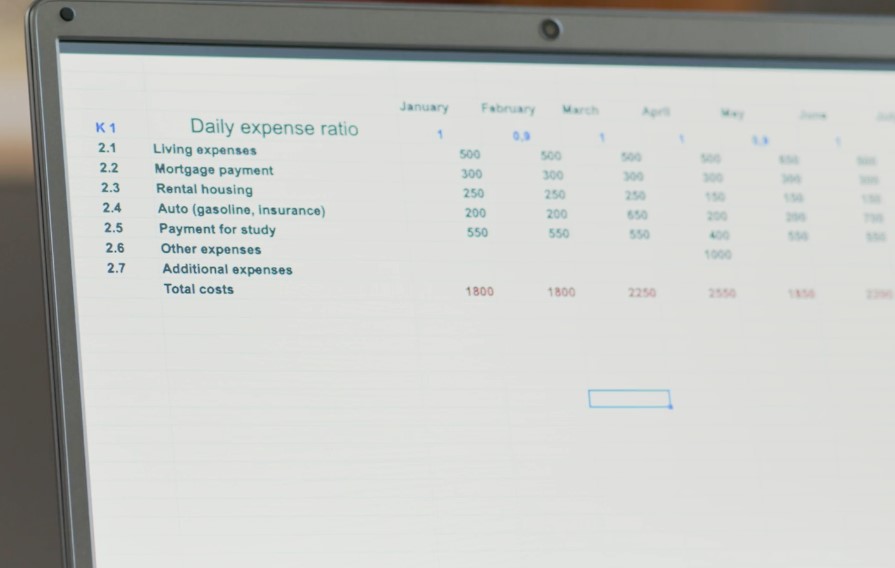Late financial planning often means starting retirement savings or investment strategies later than recommended.
Such a delay can create significant stress, especially as the realization sets in that time is limited.
Emotional pressure grows with each passing year, but all is not lost.
While achieving the perfect retirement scenario may be difficult, there are clear strategies that can restore stability, strengthen financial health, and rebuild confidence.
Key Strategies to Recover Financially
Starting late in financial planning requires a more intense and focused approach to rebuilding savings and creating stability for the future.
Success often comes from applying several strategies simultaneously, each aimed at either growing income, protecting investments, or reducing unnecessary costs.
Increase Savings Aggressively
Higher earnings later in life can be turned into a powerful advantage when allocated wisely.
Retirement accounts should be the primary focus, with every opportunity taken to contribute the maximum allowed amounts.
Catch-up contributions in 401(k) and IRA plans offer older workers the ability to make up for lost time and grow retirement balances more quickly.
Key points include:
- Direct as much disposable income as possible toward retirement accounts.
- Use catch-up contributions in employer-sponsored and individual retirement plans.
- Aim to meet or exceed annual maximum contribution limits.
- Review investments to ensure growth potential matches retirement goals.
Control Expenses Rigorously
Cutting costs becomes just as important as boosting income.
Eliminating wasteful spending and reducing debt frees up more resources for savings and investments.
Downsizing can have an immediate effect, as can changes in lifestyle that prioritize long-term security over short-term comforts.
Key points include:
- Focus on paying off high-interest debt as quickly as possible.
- Downsize housing, transportation, or other major expense categories when practical.
- Eliminate unused subscriptions or luxury services.
- Resist lifestyle inflation even when income rises.
Extend Your Working Life

Extending a career by postponing full retirement allows more time for saving and fewer years of relying solely on investments.
Many individuals benefit from continuing work in part-time, consulting, or gig roles that generate income without the demands of a full-time job.
Such work also supports mental health, providing routine, social interaction, and a sense of purpose.
Key points include:
- Delay full retirement to lengthen the savings period.
- Explore flexible work options that fit lifestyle preferences.
- Maintain professional networks to keep opportunities open.
- Use additional income to build savings rather than increasing spending.
Prepare for Market Volatility Near Retirement
As retirement approaches, market fluctuations can have a more significant effect on long-term security.
Entering what is often called the “Retirement Red Zone” requires careful planning to avoid panic-driven decisions.
Adjustments in investment strategy and withdrawal timing can protect assets during turbulent periods.
Key points include:
- Avoid selling investments during market downturns to prevent locking in losses.
- Consider delaying retirement if markets are underperforming.
- Use cash reserves, bonds, or real estate income to cover expenses during downturns.
- Revisit investment allocation to balance growth with capital preservation.
Maximize Income Sources

Recovering from late financial planning often means working every available income angle.
It can include delaying benefits for greater payouts later, finding short-term earnings to bridge gaps, and preserving investments until they have matured enough to support withdrawals comfortably.
Delay Social Security Benefits
Postponing Social Security until age 70 can substantially increase monthly benefits for the rest of your life.
The delayed retirement credits add up, and the resulting payments are adjusted for inflation, creating a stable foundation for later years.
For those in good health and able to work or use other income in the meantime, this strategy provides:
- Higher lifetime income through bigger monthly checks
- Protection against inflation eating away at purchasing power
- A reliable source of funds in the later retirement years when work may no longer be possible
Create a Short-Term Income Bridge
When there’s a gap between leaving full-time work and starting Social Security or pension benefits, a short-term bridge can keep things stable.
Skills developed over decades can be monetized through consulting or project-based work. Seasonal jobs, short-term contracts, or monetizing assets like rental property can cover expenses without touching long-term investments.
Some individuals also explore online opportunities, such as playing real money pokies in Australia, though this carries entertainment value more than a reliable financial return.
Seasonal jobs, short-term contracts, or monetizing assets like rental property can cover expenses without touching long-term investments.
Drawing from taxable accounts first can also preserve tax-deferred growth for as long as
possible.
Reassess Your Risk Tolerance and Portfolio Allocation

The years leading up to retirement demand a shift in how investments are structured.
Large market swings can have an outsized effect on retirement readiness at this stage, so gradually moving toward more conservative holdings can reduce exposure to volatility.
This doesn’t require eliminating all growth-focused investments—rather, it’s about balancing safety with opportunity.
Dividend-paying stocks, high-quality bonds, and a reduced equity percentage can help maintain stability while still allowing for growth.
Reviewing and adjusting the portfolio regularly ensures it stays aligned with both market conditions and personal goals.
Planning for Unexpected Setbacks
Unexpected events can unravel even the most careful financial strategies.
Being ready for disruptions such as job loss, health problems, or economic downturns ensures that the plan remains intact under stress.
Forced Early Retirement
Leaving work earlier than planned can create sudden pressure on savings. Building a strong emergency fund well before retirement can provide the breathing room to adapt.
Actions that can make a forced early retirement less disruptive include:
- Downsizing quickly to cut ongoing costs
- Using part-time work to maintain income flow
- Reviewing healthcare options such as COBRA, ACA coverage, or early Medicare enrollment
Having a Contingency Plan
A contingency plan ensures decisions aren’t made under panic when setbacks occur.
This might involve keeping a portion of savings in liquid accounts, identifying which investments to draw on first, or setting flexible withdrawal rates based on current conditions.
Running scenario tests for market drops, inflation spikes, or personal emergencies can highlight where adjustments will be needed, making future transitions smoother and more controlled.
Is Full Recovery Possible?
Age, current savings, health, and adaptability all influence the ability to recover fully from delayed planning. While an ideal retirement may not always be achievable, a secure and dignified one is within reach. Action taken now, combined with flexibility and consistent planning, can transform a late start into a financially confident future.

